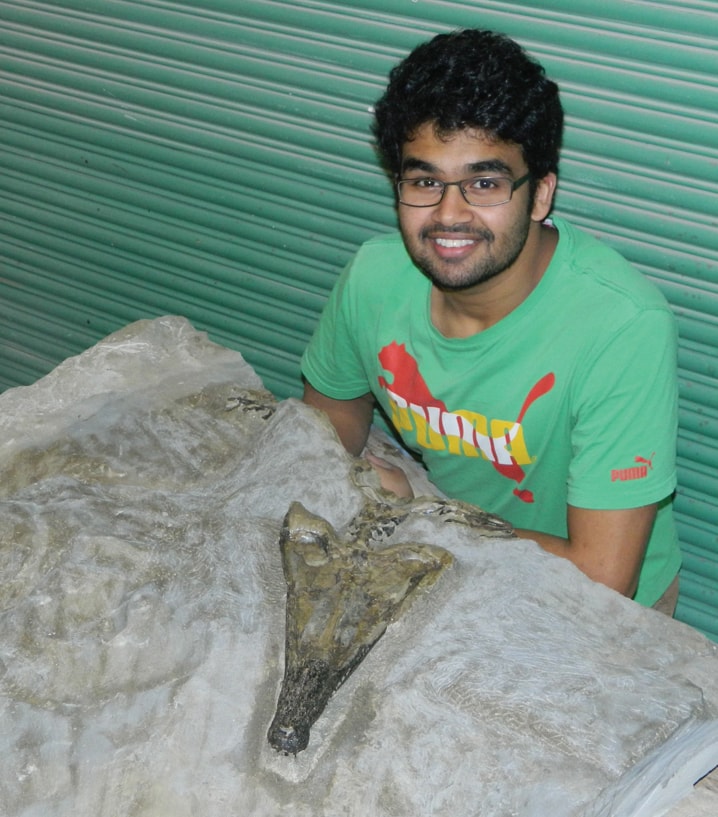Drumheller’s Royal Tyrrel Museum technicians are done chipping away at millions of years of rock to expose a prehistoric crocodile-like reptile that was discovered at Olds College last fall.
The Simoedosaurus, a type of a champsosaur who lived in the Paleocene Epoch in North America, about 60 million years ago. Champsosaurs were semi-aquatic fresh water reptiles resembling a crocodile and measured abut two metres in length.
Preservation work on the rare Simoedosaurus was completed in January.
Donald Brinkman, the museum’s director of preservation and research, said the find was extremely rare and exceptionally well-preserved with only two other Simoedosaurus ever discovered in North America. A lower jaw was found in Saskatchewan and a skull in North Dakota.
Brinkman said by far this discovery was the largest and in the best condition.
“The thing that was most unexpected was the size of the front teeth,” said Brinkman. “It has really enlarged front teeth. They have this overbite where they come over the jaw.”
The technicians removed the rock to expose the champsosaur’s skull, the front of the snout, the neck, the shoulder girdle and the jaw. They left the bones in the rock base.
Brinkman said they did not want to remove individual parts from the rocks because the bones were well preserved and they would risk losing information.
Olds College grounds technician Leona Megli found the champsosaur fossil encased in a chunk of sandstone under some debris in October. Brinkman said he knew it was a champososaur but was surprised to learn it was the rare Simoedosaurus, found typically in Europe. The more common find is the cChampsosaurus.
“(The difference) is the Simoedosaurus has a shorter broader stout and these large piercing teeth on the front of the upper jaw,” he said. “Somehow it was capturing food in a slightly different way. We don’t know if it was going after different food or capturing the same food in a different way.”
In the coming months, the hunt will continue for rest of the skeleton on the college grounds. Brinkman said it will be challenging unless they find the bone and cross section to recognize the rock block.
“But you know, if you don’t look, you don’t find,” he said.
A spot has already been selected in the museum for display. Brinkman said the specimen should be ready for viewing by the May long weekend. The museum is currently working out details with Olds College to display the specimen for a special event as part of the college’s centennial.
The museum has future plans for a detailed research project on the simoedosaurus.
crhyno@www.reddeeradvocate.com
